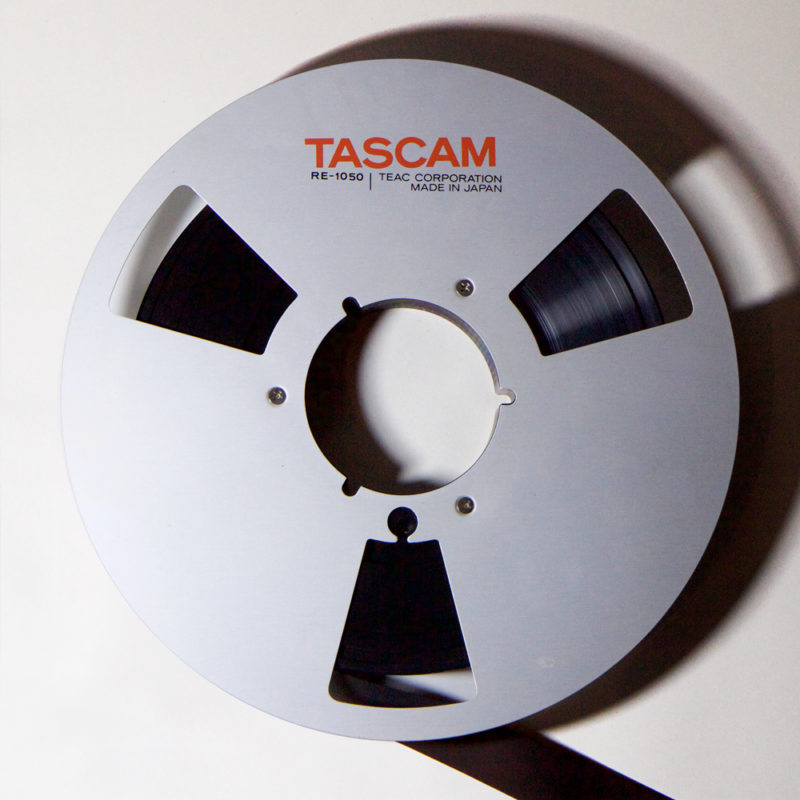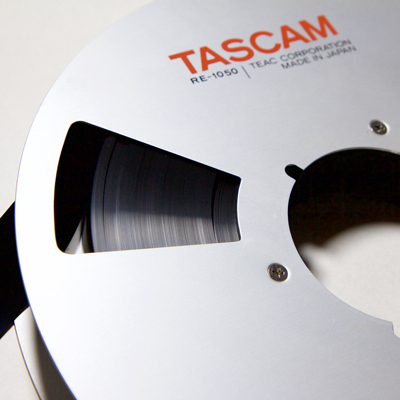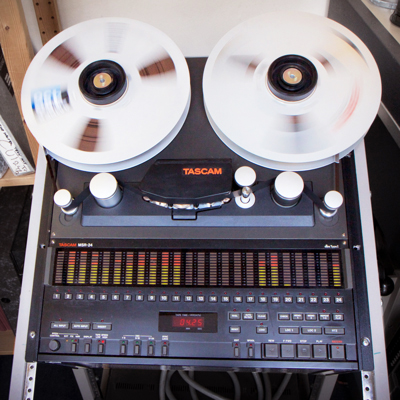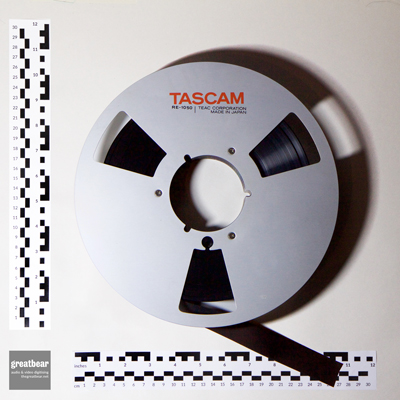introduction to 1 inch multitrack audio tape transfer
Before digital tape multitrack and hard-disk recording became feasible for the small project studio, anyone wanting to record more than 16 tracks had one option: 1" 24-track audio tape. It is however one of the rarer formats we see at Greatbear.
We can now restore and digitise both 16-track 1" and 24-track 1" multitrack recordings, with either no noise reduction or dbx Type I noise reduction.
We offer a range of delivery formats for our audio transfers. Following International Association of Sound and Audiovisual Archives TC-04 guidelines, we deliver 24-bit / 96 kHz high resolution Broadcast WAV files, together with MP3 audio file or audio CD listening versions. We're happy to create any other digital audio files, according to your needs. We can also digitise to 24-bit / 192 kHz, if required.
We can provide the appropriately-sized USB delivery media for your files, or use media supplied by you, or deliver your files online. Files delivered on hard drive can be for any operating system - MacOS, Windows or GNU/Linux and filesystems (HFS+, NTFS or EXT3).
1" reel-to-reel tapes vary in duration and in the extent of physical tape degradation, so we always assess tapes before confirming the price of a transfer.
We offer free assessments - please contact us to discuss your project.
For an introduction to our assessment and treatment processes, please see our guide to "what happens to your audio tape".
1 inch multitrack reel-to-reel machines
There are a wide variety of 1" tape formats. Ampex, 3M, Studer, Otari and Tascam, over the years, all made 1" machines with varying head assemblies, from 4-track to 24-track.
For the best quality transfer, it is important to use the appropriate tape machine for the particular track format. For example, for 1" 16-track recordings we use our Tascam MS16 which is a16-track multitrack machine. While it's possible to replay a 1" 16-track recording on a 1" 24-track machine and extract 16 tracks of audio (apparently some digitisation studios use this 'work-around'), the sound quality will suffer due to the 50% reduction in track width. At Greatbear we achieve better dynamic range and reduction of dropouts with correct / wider track format.
We use our 16-track Tascam MS16 with external dbx Type I noise reduction and our Tascam MSR24 with internal dbx Type I noise reduction and can digitise to 24-bit / 96 kHz or 192 kHz Broadcast WAV audio files.
Our machines have additionally had a recent relap of their heads by Terry Summers at Summertone Ltd.
1 inch multitrack format variation
| track format | tape speed | reel size | reel hub type | noise reduction | supported |
|---|---|---|---|---|---|
| 8-track | 15 | 10 ½ | NAB | any | ✗ |
| 16-track | 15 | 10 ½ | NAB | dbx Type I | ✓ |
| 30 | 10 ½ | NAB | dbx Type I | ✓ | |
| 24-track | 15 | 10 ½ | NAB | dbx Type I | ✓ |
| 15 | 10 ½ | NAB | Dolby S | ✗ | |
| 7.5 | 10 ½ | NAB | dbx Type I | ✓ | |
| 7.5 | 10 ½ | NAB | Dolby S | ✗ |
Scroll to the right to view full table on smaller screens.
1 inch multitrack tape risks & vulnerabilities
We often receive reels in a poor condition with a variety of physical problems with a variety of causes:
- poor storage such as mould growth, uneven wind tension or poor tape pack
- age and tape chemistry such as as loss of lubricant, ‘sticky shed syndrome‘ or broken, dried out splices
- poor handling or damage such as twisted, broken, crinkled or stretched tape
These types of problems and more must be addressed before a tape can be satisfactorily transferred.
1 inch multitrack recording history
The 1" audio multitrack recording format was initially used in the 1960s for 4-track recorders. Studer's J37 1" machines being famously used by the Beatles and others at Abbey Road studios.
Later Studer and others increased the track format to 8 on machines like the A80 1" machine and this became a more common multitrack format around the world but still mainly in more established recording studios due to cost.
Tascam and Otari both created 1" 16-track recorders in the late 1970s and into the 1980s for smaller studios and at less cost than the earlier 8-track machines.
Finally in the late 1980s and '90s Tascam and Fostex both made 1" 24-track machines that typically had incompatible noise reduction systems. Tascam used dbx Type I on its MSR24, while Fostex used Dolby S on their GS24S. Tascam went on to add Dolby S on their MSR24S model.





